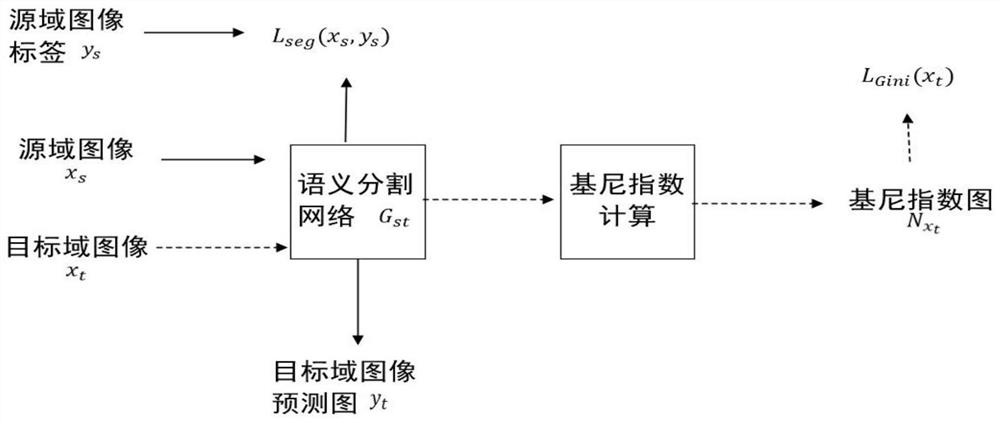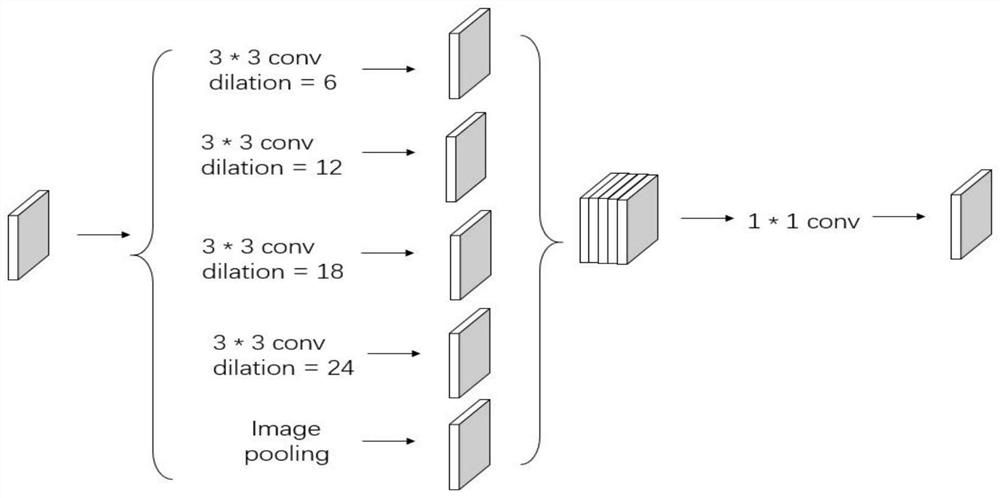Gini exponent-based domain adaptive semantic segmentation method
A Gini index and semantic segmentation technology, applied in the field of pattern recognition and computer vision, can solve a lot of experimental noise and other problems, and achieve the effect of improving accuracy
- Summary
- Abstract
- Description
- Claims
- Application Information
AI Technical Summary
Problems solved by technology
Method used
Image
Examples
Embodiment
[0122] 1. Experimental data set
[0123] The method proposed in the present invention is tested on the commonly used unsupervised adaptive dataset GTA5-Cityscapes, where the synthetic dataset GTA5 is used as the source domain and the real dataset Cityscapes is used as the target domain. Models are evaluated on the Cityscapes validation set.
[0124] GTA5: The synthetic dataset GTA5 contains 24966 synthetic images with a resolution of 1914×1052 and the corresponding ground-truth. These composite images were collected from a cityscape video game based on the city of Los Angeles. The automatically generated ground-truth contains 33 categories. The methods experimented on GTA5-Cityscapes generally only consider the 19 categories compatible with the Cityscapes dataset, and the present invention is no exception.
[0125] Cityscapes: As a dataset collected from the real world, Cityscapes provides 3975 images with fine segmentation annotations. The training set contains 2975 image...
PUM
 Login to View More
Login to View More Abstract
Description
Claims
Application Information
 Login to View More
Login to View More - R&D
- Intellectual Property
- Life Sciences
- Materials
- Tech Scout
- Unparalleled Data Quality
- Higher Quality Content
- 60% Fewer Hallucinations
Browse by: Latest US Patents, China's latest patents, Technical Efficacy Thesaurus, Application Domain, Technology Topic, Popular Technical Reports.
© 2025 PatSnap. All rights reserved.Legal|Privacy policy|Modern Slavery Act Transparency Statement|Sitemap|About US| Contact US: help@patsnap.com



